3D wind-tunnel testing of an entire bridge system (in turbulent flow)
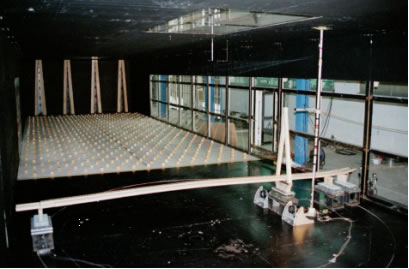
Vibration resulting from wind is investigated using a 3D elastic model, thus allowing resistance to oscillation to be studied. During testing, furthermore, it is also possible to use roughness blocks and spires to recreate turbulent flow which approximates natural winds.
3D testing of a bridge's main tower in isolation
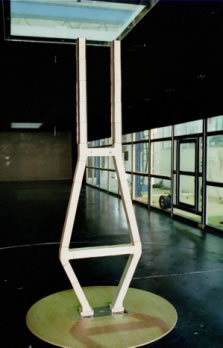
During construction, a bridge�s main tower will stand independently, and since this construction is relatively flexible, it is of considerable importance that its resistance to wind vibration be analyzed. And by taking any necessary countermeasures, safety can be guaranteed during tower erection.
2D wind-tunnel testing of bridge girders
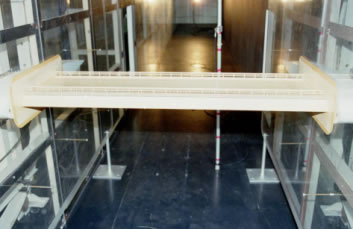
Wind-tunnel testing is carried out using rigid scale models, and by including coil springs at the ends of these models to support with two degrees of freedom in the directions of bending and twisting, the resistance of the girders to cross-wind vibration can be investigated. Furthermore, a force coefficient tester can be installed at these support sections to allow the testing and measurement of the three components of static forces.
Wind load measurement at marker girder base
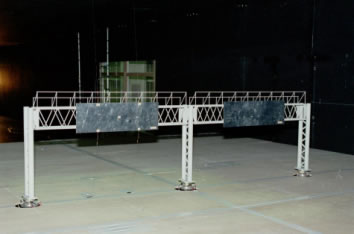
Models are used to measure the stress generated at the base of marker girders, and by accurately determining this wind-related strain, it is possible to collect valuable data for foundation design.
Study of wind-protection walls at toll booths

Wind and rain testing is carried out to determine height, position, and other necessary parameters for wind-protection walls.
Flow visualization testing using the smoke-wire method
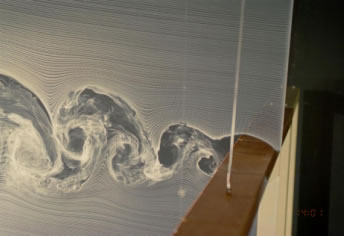
This testing is carried out in order to determine the flow of wind around constructions. In the photograph, a girder with a rectangular cross-section is being subjected to strong vibration, and consequently, Karman vortices are being generated on the downstream side (i.e., the left-hand side).
Example of Wind-Tunnel Testing
2-5-1 Nakajima, Nishi-Yodogawa Ward, Osaka City Telephone: 06-6475-2111
For any additional information regarding the content of this page, please contact the Technical Research Office.
E-Mail : inq@komaihaltec.co.jp
